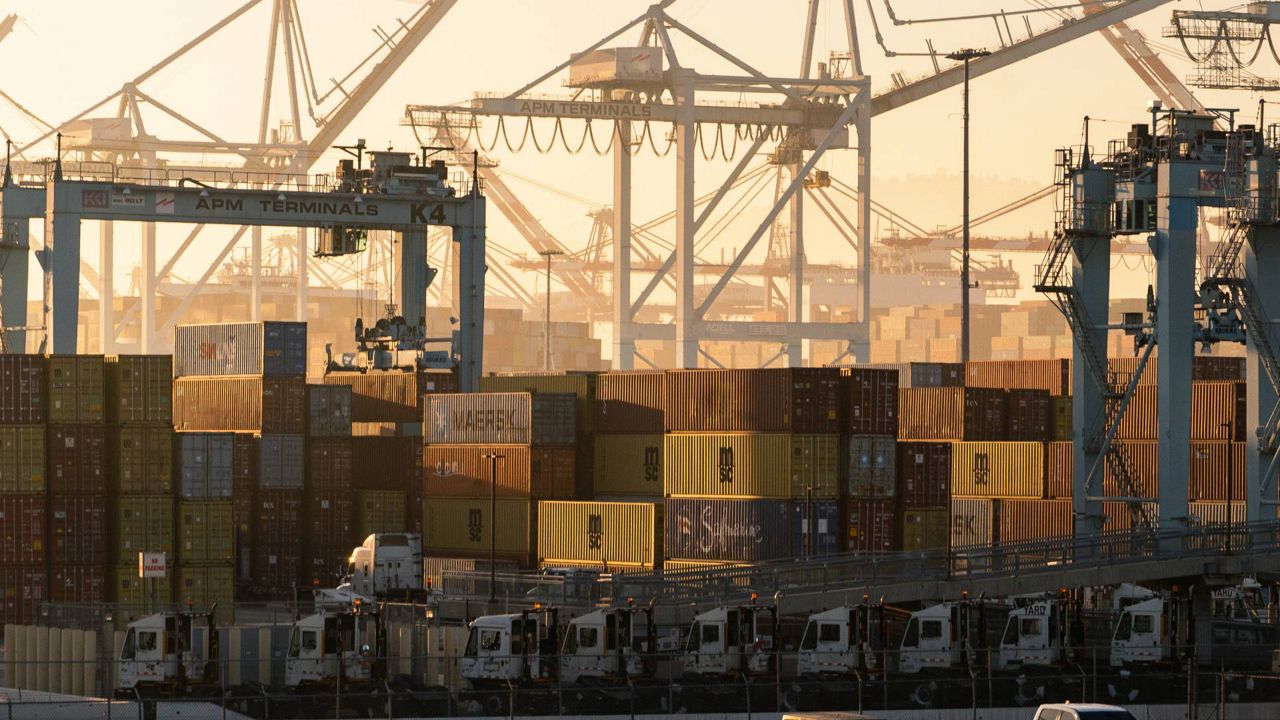LOS ANGELES — Earlier this week, the number of ships idling off the ports of Los Angeles and Long Beach hit a new record.
There are currently 97 container vessels at anchor, drifting or slowly steaming toward Southern California’s ports, where the pandemic-induced backlog continues.
“Sustained and unmatched demand by the American consumer is pushing our import numbers to new levels,” Port of LA Executive Director Gene Seroka said Wednesday during an end-of-year briefing.
With the National Retail Federation predicting record holiday sales for the year, and retail imports finishing 2021 with the largest volume and fastest-ever rate of growth, the Port of LA is on track for an all-time record of 10.8 million containers this year — a 13% increase over its previous peak in 2018.
The port has had vacillating success in handling the relentless import surge.
Solving the pandemic-induced backlog is “like a game of Whac-A-Mole. We go after one issue, and two or three more pop up,” Seroka said. “There are so many complexities within this global supply chain, and ours in the trans-Pacific trade, that it’s hard to call out just one area that’s the cause for everything we see.”
Factories are stressed by record-breaking demand, and all the ships in the world that can be deployed have been, he added.
The good news is that since Oct. 24, when the port threatened to impose fees on ships that didn’t unload their cargo in a timely fashion, dwell times have fallen 56% and the number of import containers on the port’s docks has dropped 39%. The amount of time cargo is waiting to be loaded onto rail has also fallen to its lowest level since pre-COVID times — two days, compared with 13-1/2 over the summer.
Still, some metrics are moving in the wrong direction, Seroka noted. The amount of time it takes a container on a truck to leave the marine terminal is now a record ten days, and empty containers are piling up waiting for return trips to Asia. There are currently 71,000 empty containers on the terminals, near dock depots and on port property.
Exports through the port are at their lowest since 2005 due to “the prior administration’s trade policy and China’s ensuing retaliatory tariffs; the strength of the dollar making the U.S. less competitive compared with other nations; and the most recent phenomenon of shuttling empty containers back to Asia, sometimes at the expense of U.S. manufacturers and farmers,” he said.
While the port’s inability to get empty containers off the terminals is lessening its ability to move them to rail lines and trucks, a labor shortage among truck and warehouse workers is exacerbating the problem. There are more than 400,000 open warehouse jobs and more than 80,000 open truck driver jobs in the U.S.
Since Oct. 13, when President Biden announced the port would move to round-the-clock operations, the port has been trying to get its workers on the same schedule as other parts of the supply chain. The port operates a minimum of 19 hours per day, Seroka explained, but warehouses traditionally only operate during the day, and truckers have federally mandated hours of service and safety, complicating the marine terminals' ability to move cargo.
“We just need to get everything to sync up,” said Seroka, noting that 53% of its available truck appointments are not being used, despite President Biden’s announcement of 24/7 operations.
Seroka added that the port backup is likely to continue through the second quarter of next year, as retailers work to replenish inventories that have been at their lowest levels in a decade.



